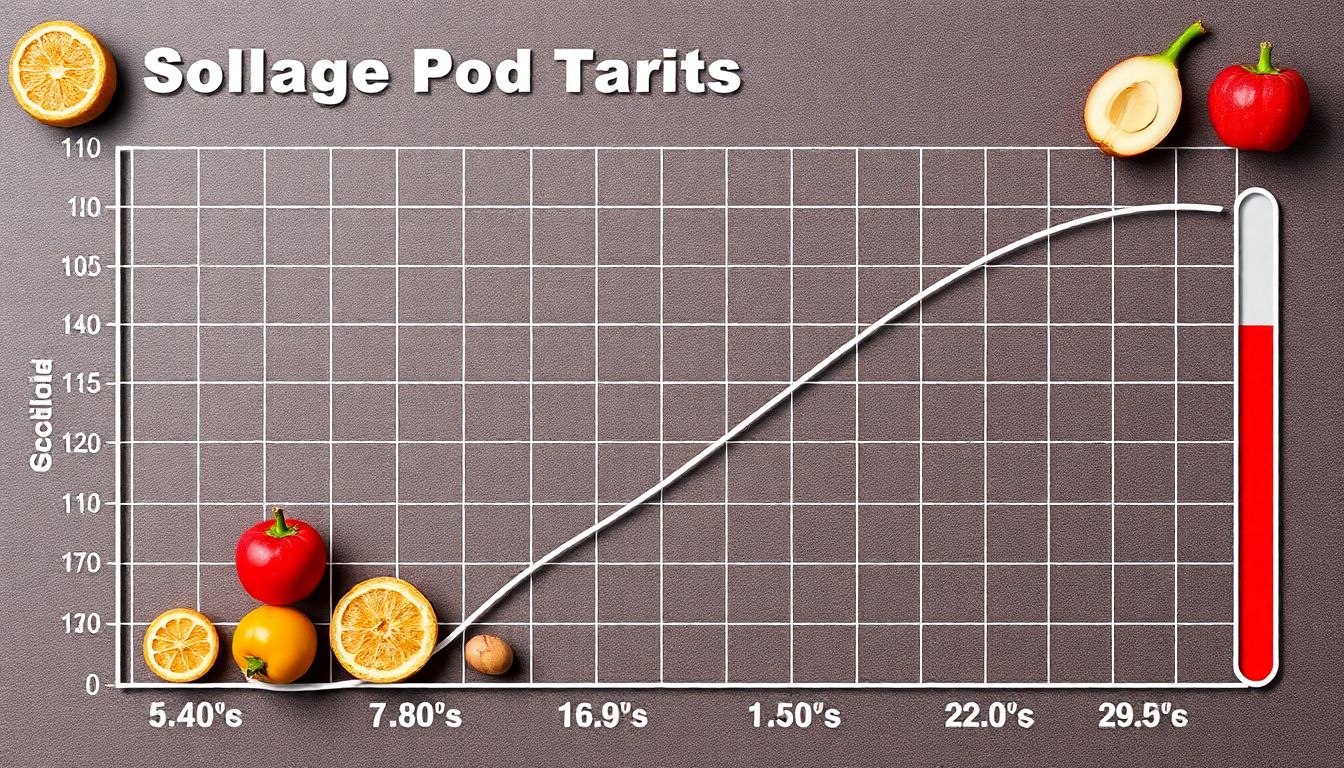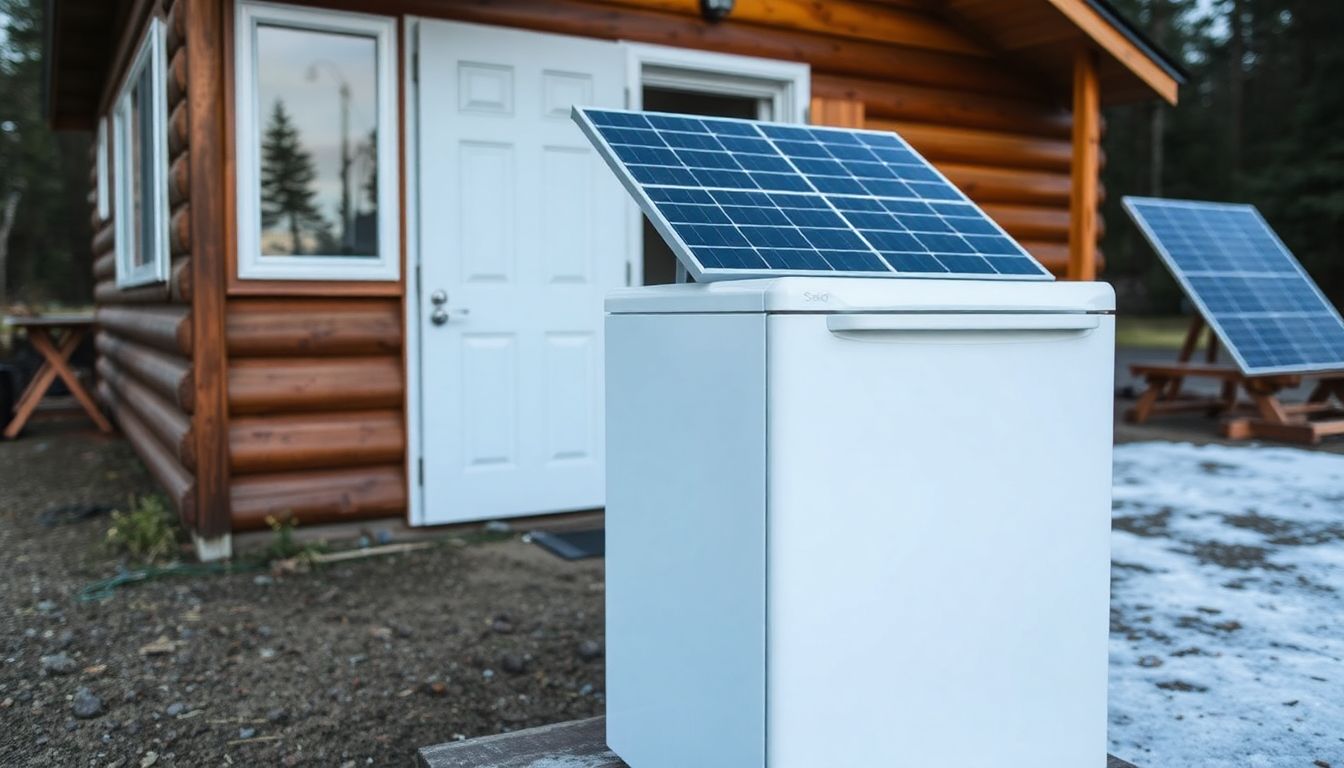Have you ever wondered how our ancestors managed to preserve food before the advent of electricity? Or perhaps you’ve found yourself daydreaming about the freedom of living off the grid, untethered from the constant hum of power lines? If you’re nodding along, you’re in the right place. Today, we’re diving into the fascinating world of off-grid refrigeration, exploring how to keep our food fresh and delicious without relying on a single watt of electricity. So, grab your notebook and let’s embark on this journey together!
First, let’s address the elephant in the room: yes, it’s absolutely possible to refrigerate food without electricity. In fact, our grandparents and great-grandparents did it for centuries. But in our modern, convenience-driven world, the idea of non-electric cooling might seem like a daunting challenge. Fear not, dear reader, for we promise that by the end of this article, you’ll not only understand the science behind off-grid refrigeration but also have a practical toolkit to implement it in your own life.
Now, you might be thinking, ‘Why bother with all this off-grid business? My trusty fridge works just fine, thank you very much.’ And you’re right, modern refrigeration is a marvel of engineering. But consider this: according to the U.S. Department of Energy, refrigerators account for about 14% of a home’s total energy consumption. That’s a significant chunk of your electricity bill, not to mention the environmental impact. Plus, what if the power goes out? Or, heaven forbid, the zombie apocalypse happens? (We kid, we kid.)
But in all seriousness, learning about off-grid refrigeration isn’t just about preparing for the worst-case scenario. It’s about gaining a new skill, reducing your carbon footprint, and perhaps even saving some money. So, whether you’re a seasoned prepper, an eco-conscious individual, or simply someone curious about the art of non-electric cooling, this guide is for you. In the following paragraphs, we’ll explore the science behind food spoilage, delve into various off-grid refrigeration methods, and provide practical tips on how to implement them. So, buckle up, and let’s get started!
Harnessing Nature’s Chill: A Comprehensive Guide to Off-Grid Refrigeration
Imagine a world where the hum of the refrigerator is replaced by the gentle rustling of leaves, and the only ice you need is the one nature provides. Off-grid refrigeration, an art as old as time, is not just a survival skill but an invitation to reconnect with the rhythm of the natural world. This comprehensive guide, ‘Harnessing Nature’s Chill’, is your key to unlocking the secrets of keeping food fresh without relying on electricity. We’ll delve into the ancient wisdom of root cellars, explore the ingenious design of solar-powered coolers, and even learn how to harness the power of evaporative cooling with DIY swamp coolers. From the frost-kissed peaks of the Himalayas to the sun-drenched plains of Africa, communities have been mastering off-grid refrigeration for centuries. Now, it’s your turn to join this global tradition and embrace a more sustainable, self-sufficient lifestyle. So, grab your shovel, your blueprints, or your sewing needle, and let’s embark on this journey together. After all, there’s nothing quite like the satisfaction of enjoying a cold drink on a hot day, knowing you’ve done it all by yourself, with a little help from Mother Nature.

Understanding the Challenge: Off-Grid Refrigeration
Refrigeration, a modern marvel, has become an integral part of our lives, playing a pivotal role in food preservation and safety. It slows down the growth of microorganisms, retards enzymatic activity, and reduces the rate of chemical changes, thereby extending the shelf life of perishable foods. However, the challenge lies in providing this essential service in off-grid settings, where access to electricity is limited or non-existent. This is where the need for non-electric cooling methods comes into play.
The primary challenge in off-grid refrigeration is the lack of a consistent power source. Electricity-dependent refrigerators, while efficient, are not feasible in areas without a reliable grid. This is where alternative, non-electric methods come into the picture. These methods often rely on natural processes like evaporation, conduction, or radiation to achieve cooling.
Understanding the role of temperature and humidity in food spoilage and preservation is key to appreciating the importance of refrigeration. High temperatures accelerate the growth of bacteria, leading to spoilage. Similarly, high humidity levels can cause food to rot or mold. Refrigeration helps maintain optimal temperature and humidity levels, slowing down these processes and extending the life of food. In off-grid settings, maintaining these optimal conditions can be challenging but not impossible with the right non-electric cooling methods.
Some non-electric cooling methods include:
- Evaporative coolers, which use the principle of evaporation to cool the air and the contents within.
- Insulated coolers, which use the principle of conduction to keep the contents cool by preventing heat transfer.
- Solar-powered refrigerators, which use solar energy to power a compressor, providing a sustainable off-grid solution.
Each of these methods has its own set of advantages and disadvantages, and the choice depends on the specific needs, resources, and constraints of the user.

The Power of Nature: Passive Cooling Methods
In the grand symphony of life, nature has evolved its own cooling mechanisms, and we humans, with our ingenuity, have learned to harness these principles for our benefit. One such method is the humble root cellar, a subterranean storage space that has been used for centuries to preserve food. The principle behind a root cellar is simple yet powerful: the earth’s natural insulation and constant temperature regulate the interior, keeping it cool in summer and warm in winter. To build one, first, choose a site with a southern exposure to maximize sunlight in winter. Then, dig a pit about 6 feet deep and line it with a waterproof barrier. Install shelves and a ventilation system to maintain optimal humidity and airflow.
Taking this concept a step further are earth-sheltered homes, which are designed to blend into the landscape and maintain a comfortable temperature year-round. These homes are built partially or entirely underground, with thick earth walls providing natural insulation. The principles of thermal mass and conduction are at play here: the earth absorbs heat during the day and releases it at night, creating a stable internal temperature. To build one, start by excavating the site, then construct the foundation and walls using materials like rammed earth or insulated concrete forms. The roof, which is often green to blend with the surroundings, should be designed to withstand the weight of the earth above.
Another fascinating application of passive cooling is the earth-bermed refrigerator. This simple yet effective device uses the earth’s natural coolness to keep food fresh. It consists of a small, insulated box buried in the ground, with an opening at the surface for access. The principle behind this method is that the earth maintains a constant temperature of about 55°F (13°C) year-round, making it an ideal place to store perishable items. To build one, dig a hole about 4 feet deep and line it with an insulated box. Ensure the box is well-sealed to prevent warm air from entering, and install a simple door at the surface for easy access.
These natural, passive cooling methods not only reduce our reliance on energy-intensive mechanical systems but also offer a unique connection to the earth. They remind us that we are part of nature, not separate from it, and that we can live in harmony with our environment. So, why not give these ancient yet innovative techniques a try? Your wallet, the planet, and your sense of connection to the earth will thank you.

Ice, Ice Baby: Making and Storing Ice
In the age of modern convenience, we often take for granted the constant hum of our refrigerators, churning out ice cubes on demand. But what if we told you that you could make ice without electricity, harkening back to the days of old when ice was a precious commodity? Let’s delve into the fascinating world of ice-making, both past and present, and explore how to store ice to maximize its lifespan.
First, let’s journey back in time to the ice houses and ice wells of yore. Ice houses were essentially insulated buildings where ice was stored. They were typically constructed with thick walls of straw, sawdust, or even hay, and were often buried partially underground to take advantage of the earth’s natural coolness. Ice wells, on the other hand, were deep holes in the ground, sometimes lined with stone or brick, where ice could be harvested and stored. In both cases, the key was to insulate the ice from the surrounding warmth and prevent it from melting.
Now, let’s fast-forward to the present. If you’re eager to make ice without electricity, consider investing in an ice-making kit. These kits use a simple process of evaporation and condensation to freeze water into ice. Some kits use a bag filled with a special solution that freezes at a higher temperature than water, while others use a wicking system to draw water up into a freezing chamber. The process may take longer than your electric ice maker, but it’s a fun and educational experiment.
Once you’ve made your ice, it’s crucial to store it properly to maximize its lifespan. Here are some tips:
- Keep your ice in an airtight container to prevent it from absorbing odors from your refrigerator.
- Avoid cross-contamination by storing ice in a separate compartment from your food.
- Freeze water in small, thin trays to create ice cubes that freeze quickly and evenly.
- Once frozen, transfer the ice cubes to a sealed container and store them in the coldest part of your freezer, usually the back.
By following these steps, you can ensure that your ice stays fresh and ready for use, whether you’re enjoying a cold drink on a hot day or preserving food in the old-fashioned way.

Insulation: The Key to Retaining Cold
In the realm of off-grid living, maintaining cold temperatures is a constant challenge. This is where insulation steps in as the unsung hero, playing a pivotal role in off-grid refrigeration. Insulation is not just about keeping your home warm in winter; it’s also about retaining the cold in your refrigerator, especially when you’re not connected to the grid.
Insulation works by creating a barrier that slows down the transfer of heat. In the context of refrigeration, this means it helps maintain the cool temperature inside your fridge or freezer, reducing the workload on your cooling system and saving energy. The effectiveness of an insulator is measured by its R-value, which indicates its resistance to heat flow. The higher the R-value, the better the insulation.
When it comes to off-grid refrigeration, several materials can be used for insulation. One popular choice is foam insulation, which can have R-values ranging from 3.5 to 6.5 per inch. This material is easy to install and can be found in various forms like spray foam, rigid foam boards, and foam-in-place insulation.
Another option is fiberglass insulation, which has an R-value of about 3.1 to 4.1 per inch. It’s widely available and relatively inexpensive, but it’s important to note that it can lose its insulating properties if it gets wet.
For those looking for a more eco-friendly option, consider recycled denim or cotton batt insulation. These materials have R-values similar to fiberglass but are made from recycled materials. They’re also resistant to mold and mildew.
Properly insulating your refrigeration space involves more than just slapping some insulation on the walls. Here are some steps to ensure you’re getting the most out of your insulation:
- Start by measuring your refrigeration space to determine how much insulation you’ll need.
- Choose an insulation material with an R-value suitable for your climate. In general, the hotter the climate, the higher the R-value you’ll need.
- Install the insulation in a way that creates a continuous barrier around your refrigeration space. This means sealing any gaps or cracks with caulk or foam sealant.
- Consider using reflective insulation, which can help radiate heat away from your refrigeration space.
- Regularly inspect your insulation to ensure it’s still in good condition and providing the necessary protection.

Solar-Powered Refrigeration: A Modern Off-Grid Option
In the heart of the 21st century, where technology and sustainability intertwine, solar-powered refrigeration has emerged as a modern, off-grid cooling solution. These innovative appliances harness the power of the sun to keep food fresh and drinks cool, even in the most remote locations. Let’s delve into the world of solar-powered refrigerators, exploring their components, workings, and comparing them with other cooling methods.
At the core of a solar-powered refrigerator lies a solar panel, which converts sunlight into electricity. This energy is then stored in a battery, powering a compressor that circulates refrigerant through the system. The refrigerant absorbs heat from the interior, cooling the contents, and expels the heat outside. A thermoelectric module, or Peltier device, can also be used, which creates a temperature difference by moving heat rather than using a compressor.
Solar-powered refrigerators offer several advantages. They are non-electric, making them ideal for off-grid living or disaster relief situations. They are also eco-friendly, reducing carbon emissions associated with traditional electric refrigeration. Moreover, they are quiet, require minimal maintenance, and have a long lifespan. However, they do have their downsides. They rely on sunlight, making them less effective in low-light conditions or at night. They also tend to be more expensive than traditional refrigerators and may not reach freezing temperatures.
Comparatively, ice-packed coolers and evaporative coolers are other off-grid options. Ice-packed coolers use ice or frozen gel packs to keep contents cool, but they require frequent ice replenishment and can be heavy and inconvenient. Evaporative coolers, on the other hand, use the principle of evaporation to cool, but they require a constant supply of water and air, and their effectiveness is limited by humidity levels.
In conclusion, solar-powered refrigerators provide a modern, sustainable solution for off-grid cooling. While they have their limitations, they offer a compelling alternative to traditional electric refrigeration, especially in situations where electricity is not readily available.

DIY Ice Boxes: Building Your Own Non-Electric Refrigerator
In the spirit of self-sufficiency and sustainability, let’s explore the art of creating your own non-electric refrigerator, a.k.a. the ice box. These ingenious contraptions have been keeping food fresh for centuries, and with a bit of DIY spirit, you can build one too!
Materials and Designs:
The beauty of DIY ice boxes lies in their versatility. You can use various materials like wood, metal, or even insulated coolers. For a classic design, consider using a wooden crate or a metal drum. For a more modern touch, an insulated cooler with a DIY lid can do the trick.
Step-by-Step Instructions:
Insulation:
- Start by insulating your chosen container. For wood, fill the gaps with straw, sawdust, or foam insulation. For metal, line the interior with foam board or reflective insulation.
Cooling:
- The key to an ice box is evaporation. Place a shallow pan filled with ice inside the box. As the ice melts, the water evaporates, drawing heat away from the contents, keeping them cool.
Ventilation:
- Drill a small hole in the top of the box for warm air to escape. In the bottom, drill a larger hole for cool air to enter. Cover these holes with a fine mesh to keep out pests.
Access:
Ensure your ice box has an easy-to-use lid or door to access your food.
Best Practices:
Location:
- Place your ice box in a cool, shady spot. The cooler the ambient temperature, the better your ice box will perform.
Ice:
- Use block ice instead of cubed. It melts slower and keeps your box cool for longer. Change the ice daily for optimal performance.
Maintenance:
Clean your ice box regularly to prevent mold and mildew growth. Allow it to dry completely between uses.
Embrace the challenge, and soon you’ll be enjoying the satisfaction of keeping your food fresh, off the grid, and with a touch of old-fashioned charm!

Food Preservation Techniques for Off-Grid Living
In the realm of off-grid living, self-sufficiency is key, and this extends to food preservation. Refrigeration, while convenient, is not always an option. Thus, we delve into time-honored techniques that require no electricity, ensuring your harvest lasts through the seasons. Let’s explore these methods, each with its unique charm and purpose.
The art of canning, for instance, is a tried-and-true method that involves heating food in sealed jars to kill bacteria and prevent spoilage. It’s perfect for high-acid foods like fruits and tomatoes, and with a little practice, you can enjoy your garden’s bounty all year round.
Fermentation, another ancient technique, harnesses the power of beneficial bacteria to preserve food and enhance its nutritional value. Sauerkraut, kimchi, and kombucha are all products of fermentation, and they’re surprisingly easy to make at home. Just remember, the key to successful fermentation is cleanliness and patience.
Dehydrating, or removing moisture from food, is another effective preservation method. This can be done naturally in the sun or with a dehydrator, and it’s ideal for fruits, vegetables, and even meats. The result? Lightweight, long-lasting ingredients that are perfect for camping trips or emergency food supplies.
Smoking is another method that’s been used for centuries to preserve food. It works by coating food with a layer of smoke, which acts as a natural preservative. This technique is particularly effective for meats and cheeses, and it adds a delicious smoky flavor to boot.
These methods can be used independently or in combination to create a diverse and sustainable food supply. For example, you might can your garden’s surplus tomatoes, ferment some of your cabbage into sauerkraut, dehydrate your apples for a winter snack, and smoke some of your venison for a protein-rich meal. By understanding and utilizing these techniques, you can reduce waste, save money, and ensure a steady supply of nutritious food, even without refrigeration.

Monitoring and Maintaining Off-Grid Refrigeration Systems
In the realm of off-grid living, maintaining a reliable refrigeration system is not just a convenience, but a necessity. Off-grid refrigeration systems, often non-electric and powered by alternative energy sources like solar or wind, play a crucial role in preserving food and medicine, especially in remote or disaster-prone areas. The importance of monitoring temperature and humidity in these spaces cannot be overstated. Temperature fluctuations can lead to spoilage, while excessive humidity can promote bacterial growth and mold, both of which can compromise the safety and longevity of stored items.
The first step in maintaining these systems is regular temperature and humidity monitoring. This can be achieved using simple, battery-operated thermometers and hygrometers. Ideally, the temperature should be maintained between 35°F to 38°F (1.7°C to 3.3°C) and humidity should be kept below 60% for optimal performance and food safety.
To maintain and troubleshoot non-electric cooling systems, understanding their basic components and mechanisms is essential. These systems often rely on principles of evaporation and insulation to cool. Here are some steps to ensure optimal performance:
- Regularly inspect the system for any signs of damage or wear, such as cracks in the insulation or leaks in the cooling unit.
- Ensure that the system is properly ventilated. Inadequate ventilation can lead to overheating and reduced cooling efficiency.
- Check the cooling unit’s evaporator and condenser coils. These should be clean and free of debris. Any buildup can hinder heat transfer and reduce cooling efficiency.
- Inspect the system’s fans and ensure they are functioning properly. Fans help to dissipate heat and maintain optimal temperatures.
- Monitor the system’s power source, whether it’s solar panels or a wind turbine. Ensure they are functioning correctly and providing adequate power.
In case of any issues, troubleshooting can be done by checking the system’s manual or consulting with a professional. Regular maintenance and monitoring can help prevent major issues and ensure the longevity and reliability of off-grid refrigeration systems.
FAQ
What is off-grid refrigeration and why is it important?
What are some non-electric cooling methods?
- Ice boxes and coolers
- Evaporative coolers
- Root cellars and earth sheltered refrigerators
- Solar-powered refrigerators
- Thermal mass cooling
How do ice boxes and coolers work?
What is evaporative cooling and how can it be used for refrigeration?
How can I build a root cellar for off-grid refrigeration?
- Choose a location with a northern exposure and gentle slope for drainage
- Excavate the site to the desired depth, ensuring it’s below the frost line
- Line the walls and floor with a waterproof barrier, such as concrete or plastic
- Install a door and ventilation system to control airflow and humidity
- Insulate the entryway to maintain a consistent temperature
What are the pros and cons of solar-powered refrigerators?
- No greenhouse gas emissions
- Low operating costs
- Portability, as some models can be used both indoors and outdoors
However, they also have cons, such as
- High upfront cost
- Dependence on sunlight, making them less effective in cloudy or shaded conditions
- Noise from the compressor, depending on the model
How can I use thermal mass cooling for off-grid refrigeration?
- Construct a well-insulated structure with a thermal mass material as one of the walls
- Position the thermal mass wall to face the prevailing nighttime breeze
- During the day, the thermal mass absorbs heat from the sun and the surrounding air
- At night, as the temperature drops, the thermal mass releases its stored heat, cooling the air inside the structure
What are some food preservation techniques to complement off-grid refrigeration?
- Canning and jarring
- Fermentation
- Dehydration
- Freezing
- Salting and curing
These methods can help extend the shelf life of food and reduce the reliance on refrigeration.
How can I maintain food safety while using off-grid refrigeration methods?
- Keep food covered or in sealed containers to prevent contamination
- Regularly clean and sanitize storage containers and surfaces
- Monitor food temperatures, ensuring they remain below 40°F (4°C) for optimal safety
- Rotate food stocks using the ‘first in, first out’ method to ensure older items are used first
- Be cautious with foods that spoil quickly, such as dairy and meat, and consider alternative preservation methods
What are some innovative, off-grid refrigeration solutions?
- Zeer pots, which use the principle of evaporative cooling to create a natural refrigerator
- Solar dehydrators, which combine solar power with dehydration to preserve food
- Hybrid refrigerators, which use a combination of solar power, thermal mass, and other renewable energy sources
- Vacuum-insulated panels (VIPs), which provide superior insulation for refrigeration applications
These solutions demonstrate the potential for creative and sustainable off-grid refrigeration.









